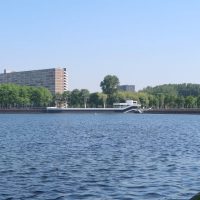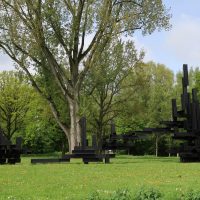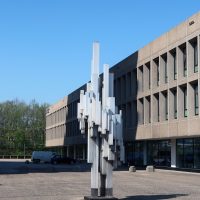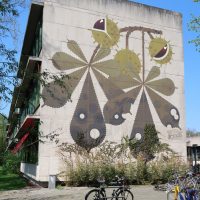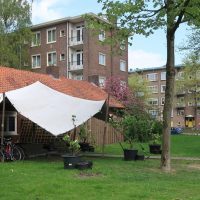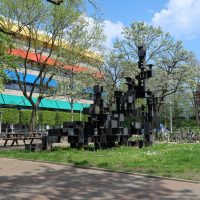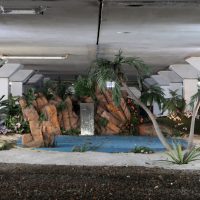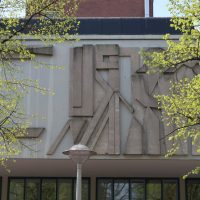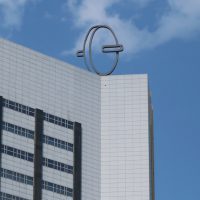2 U’s naar buiten / 2 U’s naar binnen, Carel Visser, 1960
Bos en Lommerplantsoen
‘Sculpting is like defecating, endlessly rocking back and forth until it is finally there.’
Carel Visser has worked with a whole range of materials throughout his career, from sand, shells and eggs to discarded car tires, oil drums and toys. But it wasn’t until a later stage in his career that he started employing these materials, as in the 1950s and ‘60s he still preferred steel.
Visser experienced sculpting with massive, heavy steel beams as a tough process. ‘That’s why it always takes so long. Sculpting is like defecating, endlessly rocking back and forth until it is finally there.’
Carel Visser was a representative of constructivism, a movement related to De Stijl. In the same manner Mondriaan drew a straight line on paper, so Visser worked with steel beams manufactured for industrial use. They came in all sorts: I-beams, H-beams and these ones in Bos en Lommerplantsoen which are U-beams. About his choice of material Visser said back then: ‘(…) Working with a sheet of paper, a pencil and a bit of glue, bending a piece of metal – all of this to me is a kind of activity on one side of a borderline. On the other side for example is bronze. Those bronze objects you see about the city sometimes, they scare me.”
Upon taking a close look at 2 U’s naar buiten / 2 U’s naar binnen (2 U’s outward / 2 U’s inward), you see the beams are not perfectly stacked, that the lines are not as straight as they seem to be at first sight and that the seams have not been polished. In other words, the work is not machine-made, it is hand-made.
The human aspect also played a part in choosing the location. Architect and designer Aldo van Eyck once told Carel Visser never to show his works in a white space but always against a distinct (dark) background: surrounded by white they would look flat, like silhouettes. Whatever angle you pick to look at 2 U’s naar buiten / 2 U’s naar binnen from, there are buildings and plants everywhere. The only distraction from the two inward U’s are the two outward U’s, that’s all.
More information
Crouwel, Wim en Peski, Daphne van (1978) Carel Visser – Papierbeelden. Amsterdam: Stedelijk Museum Amsterdam.
